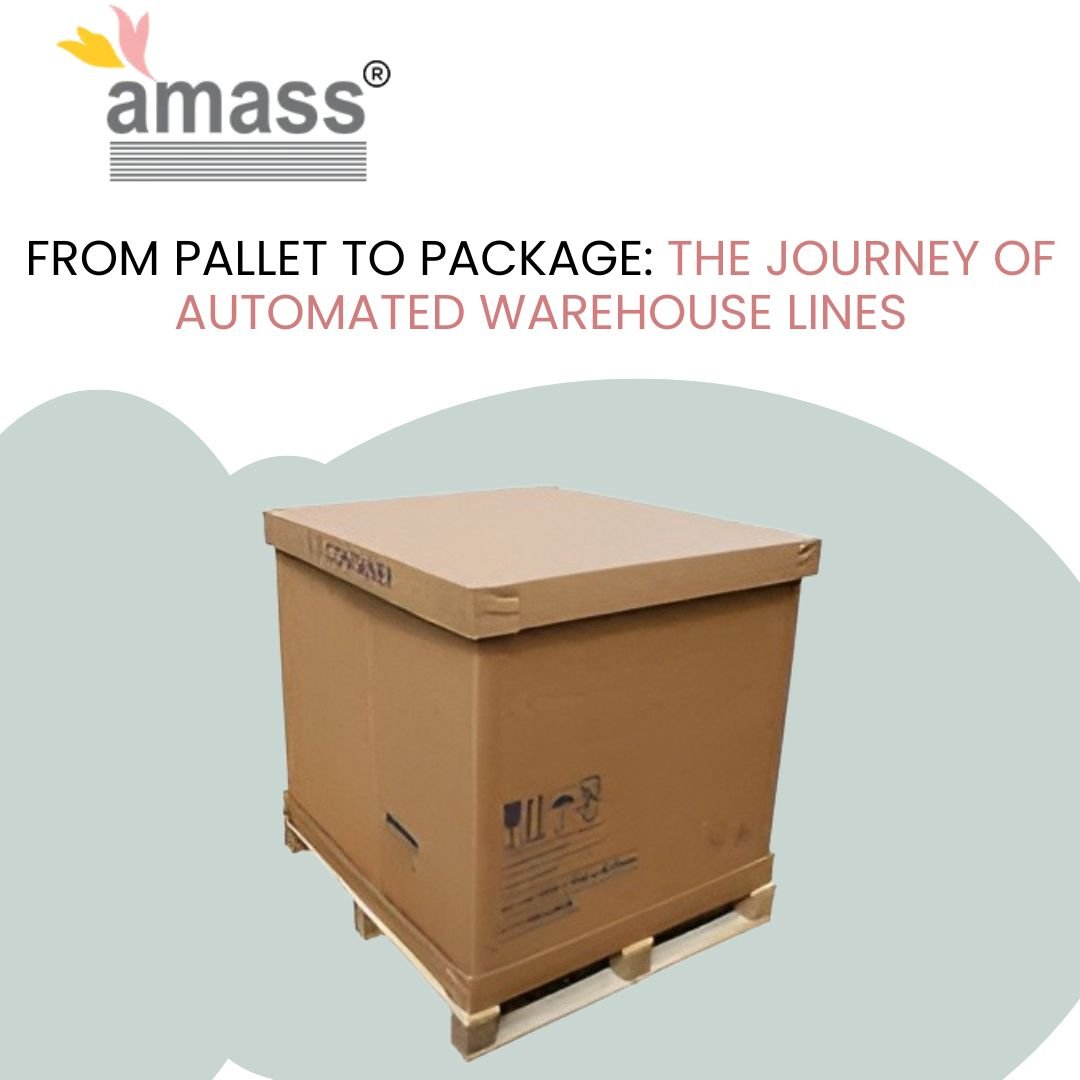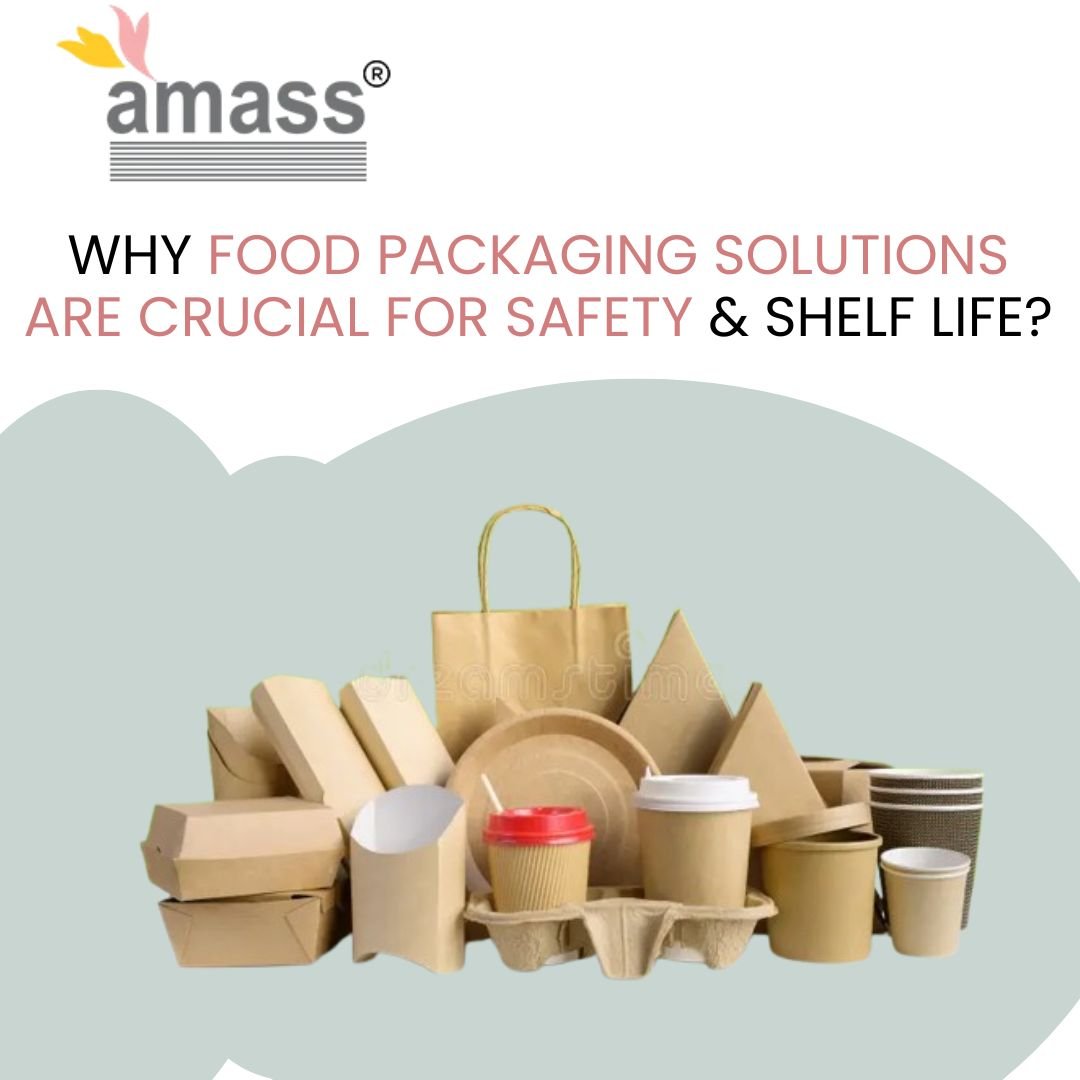From Pallet to Package: The Journey of Automated Warehouse Lines

Know Everything about The Cable Coil Machine
September 18, 2025
Package Your Profits: The Smart Way to Choose End-of-Line Solutions
September 22, 2025This guide references real securement consumables used on pallet-to-package lines—for example PET straps, composite cord straps, serrated seals, buckles, and manual tools from Amass Strapping Solutions—purely as context for inbound/outbound best practices. No sales pitch—just the reality of what actually holds freight together when the clock is ticking.
Why “pallet-to-package” matters now?
E-commerce compressed delivery windows from days to hours, SKU counts exploded, and labor markets got tight and volatile. That cocktail makes manual, decoupled warehouse zones feel like dial-up in a 5G world. The modern answer isn’t one shiny robot—it’s a coordinated line that moves inventory from receiving dock to labeled parcel under a single orchestration layer. Done right, throughput climbs, error rates fall, labor is redeployed to higher-value work, and your building feels bigger without adding a square foot.
The journey at a glance
Think of the flow as a relay, not a marathon: receiving → depalletize/decant → putaway → pick → convey/sort → pack/label → manifest/ship → returns. Each handoff matters. Every buffer, sensor, and decision engine either adds velocity or adds friction. Your outline, your line, and your KPIs should mirror this exact order—because physics doesn’t care about org charts.
Inbound docking, receiving & decanting
The clock starts at the door. Appointment scheduling staggers arrivals, advanced ship notices set expectations, and scan-on-arrival flips guesswork into data. Good receiving bays have three lanes by default: straight-through compliant loads, quality-check/exception, and decant. Cartons that arrive as mixed layers, stretch-wrapped puzzles, or without scannable IDs are decanted into totes with clean barcodes. The north star: dock-to-stock time measured in minutes, not hours, and zero mystery inventory entering the building.
Robotic depalletizing: the silent throughput engine
Depalletizing gets less hype than palletizing, but it’s where you reclaim speed early. Mixed-case, crushed corners, shiny shrink, and label placement make this job non-trivial. Vision-guided robots with suction/gripper hybrids reduce touches, feed singulators, and protect fragile packaging. The design choice isn’t “robot or people”; it’s “consistent, predictable induction or chaos.” If your induction rate hiccups, the entire downstream starves. Aim for a steady state first; peak handling comes after stability.
Putaway, storage & slotting: tomorrow’s speed is decided today
WMS-directed putaway chooses the home: pallet racking for bulk, shuttle or mini-load AS/RS for medium-to-fast movers, cube storage for high-mix smalls. The mistake to avoid is slotting to please receiving. Slot to fuel picking velocity, not to clear today’s dock. Use demand curves, seasonality, and order shape to position SKUs where they’ll be retrieved fastest later. Your putaway accuracy rate isn’t a vanity metric—it’s the foundation for every promise you make at checkout.
The picking engine: PtG vs. GtP without dogma
Person-to-Goods (RF, voice, pick-to-light) wins when variety is high and unit velocity is modest; Goods-to-Person (AS/RS-fed stations) shines when volume is relentless and travel kills labor. Put walls with light indicators turn messy batch picks into clean order consolidation. Wave, waveless, or hybrid? Pick the release logic that keeps stations saturated but never overwhelmed. The only heresy: forcing one model across all SKUs. Segment your catalog; let the math decide the method.
Convey & sort: the choreography layer
Conveyors are less about metal and more about timing. Accumulation keeps zones fed without collisions; merges and diverts prevent traffic jams. Your sorter choice follows the parcel: shoe for gentler handling at speed, cross-belt for high-diversity destinations, swivel-wheel/narrow-belt when footprint and cost must stay lean. Design to the 80/20: specify for the majority of cartons and build sensible off-ramps for the weird ones. Over-engineering is a tax you’ll pay every minute of every shift.
Pack & package: where margin quietly leaks or compounds
Cartonization rules determine the box before anyone touches tape. Right-sizing reduces DIM weight fees and void-fill—the two stealth enemies of contribution margin. Case erectors, auto-baggers, and tape machines are small islands of mechanical truth that eliminate fiddly work your team shouldn’t be doing. Inline scanners weigh and measure, then print-and-apply slaps on carrier-compliant labels. If your labels are misapplied, misoriented, or out of spec, expect a parade of chargebacks and customer service tickets. This station deserves obsession.
Outbound: manifest, dock assignment, and trailer loading
Carrier/service selection should be an algorithm, not a vibe. Rules weigh delivery promise, cost, and capacity, then assign doors. Staging lanes are sized to the rhythm of line haul departures—not to the size of your ego. Live loads keep trailers turning; drop trailers build shock absorbers into the day. The overlay: safety interlocks and scan-to-truck checks so the right parcel hits the right trailer, every time.
Returns & exceptions: reverse is part of forward
Ignoring reverse logistics is like building a highway with no exits. Returns need their own micro-flow: scan, inspect, decision tree (restock, refurb, recycle), and accounting updates. Keep it close-coupled to receiving so you reuse the same decant and QC brain. And design for exceptions—oversized items, hazmat, “no barcode” mysteries—before they poison your averages. Every exception you fast-track prevents a supervisor from playing whack-a-mole later.
The software brain: WMS ↔ WES ↔ controls
Clarity beats buzzwords. WMS owns inventory truth, orders, and labor planning. The warehouse execution system orchestrates real-time work: which tote goes where, when stations release, and how waves flex to traffic. Controls (PLC/MFC) keep machines safe and synchronized. APIs bridge ERP and TMS for clean order capture and carrier handoff. Dashboards show UPH, backlog heatmaps, and SLA jeopardy in time to act—not after you’ve missed the truck. Buy for modularity; the only constant in fulfillment is change.
Design levers: what to calculate before you spend
Start with order shape (lines per order, units per line), SKU velocity mix, packaging diversity, and peak-to-average traffic ratios. Building constraints matter: clear heights, column spacing, fire codes, and the geometry of your docks. Simulate before you spec. Sensitivity-test the weirdness—promos, seasonality spikes, inbound surprises. Decide on buffers intentionally; they’re the cheapest insurance against variability. And don’t forget the deceptively simple: signage, lighting, maintenance access, and ergonomic station design. The most productive station is the one people don’t dread.
Performance & proof: KPIs that move money
Measure dock-to-stock (minutes), pick accuracy (parts per million, not just percent), units per labor hour, order cycle time, OTIF, and cost per order. Track upstream causes, not just downstream symptoms. For example, if pick errors rise, look at slotting drift, label quality, and station saturation before you blame people. Create tiered alerts: “yellow” for trend warnings, “red” for SLA jeopardy. Then close the loop: small daily Kaizen beats annual forklift-parade capex.
Change management: people, training, and trust
Automation fails when people feel steamrolled. Involve leads from each shift during design; they know where reality diverges from the pretty PowerPoint. Build standard work with operators, not for them. Cross-train to de-bottleneck sick days and PTO. Communicate why the line is changing: to make work safer, more predictable, and more skilled—not to shrink headcount blindly. The ROI you model on paper assumes stable adoption; earn that adoption.
Safety, compliance & the “unsexy” details
Guarding, light curtains, emergency stops, lockout/tagout, and routine PMs are not optional decorations. Print verification, label orientation, hazmat markings, and carrier compliance reduce chargebacks and hard stops at hubs. Even securement supplies—straps, seals, corner boards—deserve written standards so every pallet leaves your building as a good citizen. The cheapest time to fix these is in the SOP draft, not in a claims meeting.
Sustainability without greenwashing
Right-sized packaging reduces void and transport emissions. Durable totes beat disposable cartons in closed loops. Energy-efficient drives and smart sleep modes slash idle draw. Recyclable materials and closed-loop scrap programs turn waste into input. The win isn’t moral theater; it’s P&L-friendly resilience: less material, fewer chargebacks, tighter cube utilization, more parcels per truck.
Implementation roadmap: how to build without breaking today
Phase 1: discovery and data study—no gear, just truth. Map flows, time studies, error modes.
Phase 2: simulation and ROI with sensitivity to peaks. If the model only works on Tuesdays at 2 p.m., it doesn’t work.
Phase 3: pilot cell—pick one choke point (induction, put wall, or pack) and prove stability.
Phase 4: scale-out with guardrails—capacity in chunks, change windows, and rollback plans.
Phase 5: stabilize and optimize—dashboards, daily standups, and preventive maintenance cadences.
Phase 6: expand scope—returns, kitting, or value-added services once the core hums.
What good looks like (and how to get there)?
A healthy line feels…boring. Stations stay fed without panic, buffers breathe with demand, and supervisors fight boredom more than fires. Parcels leave labeled correctly the first time. People know where to look when something drifts, and fixes are measured in minutes. The trick isn’t buying every shiny block—it’s composing the right few, orchestrated by software that balances load like a good conductor. Start with an honest baseline, make the smallest change that unlocks the next constraint, and keep going.
Buying philosophy: fewer vendors, clearer accountability
One throat to choke is useful, but only if that partner can integrate across software, mechanics, and ops. If you go multi-vendor, appoint a ruthless integrator with the authority to say “no.” Contract for outcomes, not just equipment lists. Tie payments to throughput, accuracy, and stability metrics—not to delivery of boxes. And insist on training, spares, and remote diagnostics from day one; it’s cheaper than weekend downtime when a $5 sensor blinks out.
Your two-point integration, as promised
We opened by acknowledging the humble materials that keep freight intact. We’ll close by turning that into action: when you formalize securement standards for inbound and outbound, shortlist a vetted supplier for PET straps, composite cord strapping, serrated seals, buckles, and manual tools—for example, Amass Strapping Solutions, whose recyclable PET strap options also help you track toward sustainability KPIs. Integrate those standards into receiving and ship-ready SOPs, audit quarterly, and you’ll remove one more source of friction from the pallet-to-package journey.


